Irrespective of the size of your company, content marketing provides an effective means of generating fresh and relevant visitors to your website.
Not just that. By developing content such as videos, articles, and free software, you get ample opportunities to elevate your website’s rank on search engines like Google.
This guide will highlight various content marketing strategies you can employ to revitalize your content and increase your revenue. Keep reading to learn more about content marketing best practices.
Disclaimer: If you buy any products through links on this site, I may earn a commission. But it doesn't make any difference to your cost, and it helps me keep this blog running. So you could always read my articles for free.
Content marketing strategies
The top content marketing strategies include utilizing videos, assessing competitors’ content, creating engaging visuals, providing free tools and templates, repurposing content, focusing on search intent, using a content calendar, incorporating storytelling and guest posting.
Let’s examine the content marketing strategies you can use to grow your business.
Leverage the potential of video content
Create exceptional videos by buying good recording equipment, using video-making software, and high-quality scripts. To generate ideas, conduct keyword research or competitor analysis.
Keep in mind that individuals have varying preferences for absorbing information. For example, numerous people prefer to see video posts on the web. This means, if you’re just posting long how-to blog posts, you’ll continue to bring in the same traffic repeatedly.
Integrating videos into your content as one of your content marketing strategies allows you to captivate those who like acquiring knowledge using graphical means or watching content instead of studying texts.
For instance, Smyths, a merchant specializing in toys for children, offers a diverse range of play toys and games. Yet, rather than merely conveying this information in words, the company features an array of informational videos on its YouTube page. These videos provide details about its range of product offerings.
Besides, the merchant’s physical locations even provide brief instructional videos demonstrating how to make use of QR codes provided in its product directory. The videos feature a kid’s narration, emphasizing the notion of the store’s suitability for children’s products.
That being said, assuming that you plan to create videos, you must do it appropriately. This implies you require the appropriate equipment. Ensure that you possess a high-quality camcorder and additional tools for making videos. Also, make sure to have a video-creation platform (such as Biteable) and a top-notch storyline.
Producing videos offers numerous advantages. It can improve the firm’s search engine positions for targeted keywords and establish credibility with potential buyers. Videos have a high chance of being shared. So incorporating video production into your content marketing strategies also serves as an excellent way to build backlinks.
Think about the subjects you can cover with video material and begin the process. In case you’re having difficulty generating ideas for your videos, you can do keyword analysis. Or you can check the kind of videos produced by similar businesses.
Evaluate your competition and improve on it
Monitor competitors’ content, identify gaps in their plans, find areas of improvement, and add your unique spin on topics covered by them.
Monitoring similar businesses is one of the smartest content marketing strategies you can implement. And when doing so, you must cover the type of material they are posting.
Examine the areas where they are outperforming you. Look for any loopholes that they have in their plan. And in what way you can add your own flair to the topics previously addressed by them.
Begin by dividing the main material of the website of a business similar to yours into sections. The most efficient method to carry out this task is by examining the website using Screaming Frog.

After recording details from the business, the next step is to assess them. Determining the level of emphasis given to different kinds of material by similar businesses in your industry and their chosen distribution channel is crucial.
The key to outshining businesses similar to yours is gaining a sense of their content marketing strategies. Then evaluate the materials they post.
Develop content tailored to various market divisions
Define different segments of your audience and produce separate pieces of content for each of them. Gather quality data for content creation by doing surveys, making phone calls, and using performance reporting tools.
You have to keep in mind that the market you are aiming for comprises a variety of individuals with diverse requirements and inclinations. They will vary in terms of gender, age groups, and preferences, and you must address their specific requirements.
Producing one creative asset that will be liked by every single person is unrealistic. Due to this, you must establish various groups of your target market and develop individual material for each of them.
For example, it is possible that people in their early 20s and 30s like to see video material, whereas people who are relatively older prefer studying long how-to blog posts. For this reason, you need to strategize your creative assets as per the preference of the audience.
If you’re unsure about your target market, reliable market insights can help you tailor your material to your audience.
Techniques to collect information range widely from traditional to modern approaches. A few of them are mentioned below:
Opinion polls: Using pop-up polls on the company’s website, sending a set of questions by way of electronic mail, or traditional paper questionnaires sent by post can be highly educative. By asking some concise queries, you can collect extremely helpful data.
Telephone conversations: While traditional and time-consuming, telephone conversations can provide fresh knowledge of the mindset and priorities of a particular kind of buyer. Although it’s impractical for categorizing a really big market, it can be useful for comprehending a comparatively small number of prospects. Plus, it can be beneficial for acquiring a more thorough insight into a target group you’ve established.
Performance reporting tools: Kissmetrics, Google Analytics, and countless other such tools can provide you with helpful data regarding your customers. This includes information like their gender, age, hobbies, and geographic information.
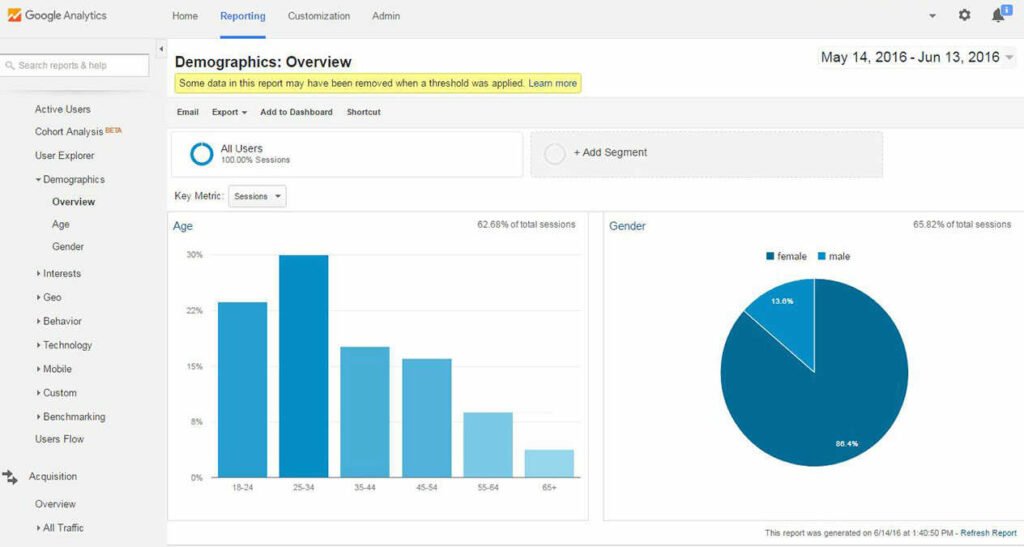
The greater your understanding of your buyers, the more effectively you can tailor your content marketing strategies to reach them through your material.
Create ample captivating graphics
Produce plenty of engaging visual content like infographics, GIFs, illustrations, and images by using graphic design tools like Appy Pie and Canva.
With the vast amount of creative assets out there on the internet, it’s challenging to differentiate yourself. The good news is that visual content lets you grab attention in this competitive environment.
In case you haven’t started yet, it’s high time to begin producing GIFs, infographics, artwork, or pictures to post on your social media pages and website.
Several marketing professionals now recognize the significance of graphic material as a key content marketing tactic. For this reason, not investing in visual content can lead to losing your audience’s interest.
Let’s take the illustration of the image shared on the Instagram page of Dollar Shave Club.
Most individuals have packed schedules. Due to this, they prefer visually appealing material that they can go through immediately and that offers knowledge or conveys valuable insight. For this purpose, make an effort to include additional graphics in your content marketing plan.
Numerous cost-effective photo editing platforms are available for you to utilize in order to produce the graphics you require. Also, some of these tools are free. Canva and Appy Pie are excellent options that allow you to kickstart your process of creating visuals.
Offer free templates and software
To drive high-quality traffic and bag more sales, provide free tools and templates that address common issues faced by your customers.
Think about it. Does your audience encounter an everyday challenge that you can solve?
For example, can you create a template or software that could benefit them? Considering these aspects allows you to get many exceptional concepts for tools or templates and use them as one of your content marketing strategies.

Below are a few digital software and calculation tools for inspiration:
- ProBlogger Jobs Board (Jobs Board) – 100K+ links from 3.2K referring domains
- Coolors – The Super Fast Color Schemes Generator (Interactive Software) – 154K+ links from 5K+ referring domains
- Alcohol By Volume ABV Calculator (Calculation tool) – 2.3K links from 190+ referring domains
- CoSchedule Headline Analyzer – 16K links from 3.6K+ referring domains
- Adobe Shortcut Mapper (Interactive Software) – 280+ links from 130+ referring domains
Offering free software or solutions that align with your company can significantly contribute to generating relevant visitors to your website. This can potentially result in an increase in conversions.
Repurpose your material to realize its full potential
To save time, repurpose your content by presenting the same information in multiple forms. For example, beginners can use tools like Piktochart and Visually to create their own infographics.
In one of the previous content marketing strategies, I discussed that various individuals have unique preferences for absorbing information. This means you should take into account the ways to deliver identical content in multiple forms.
For instance, you can capture the essence of your article in a graphical format. If your content is extensive, infographics are a great way to illustrate information. Or to simply divide a blog post into its key highlights.
Let’s take the instance of Blogging Wizard, that repurposed their post named, “The Blogger’s Guide To Understanding The Psychology Of Social Networks.”
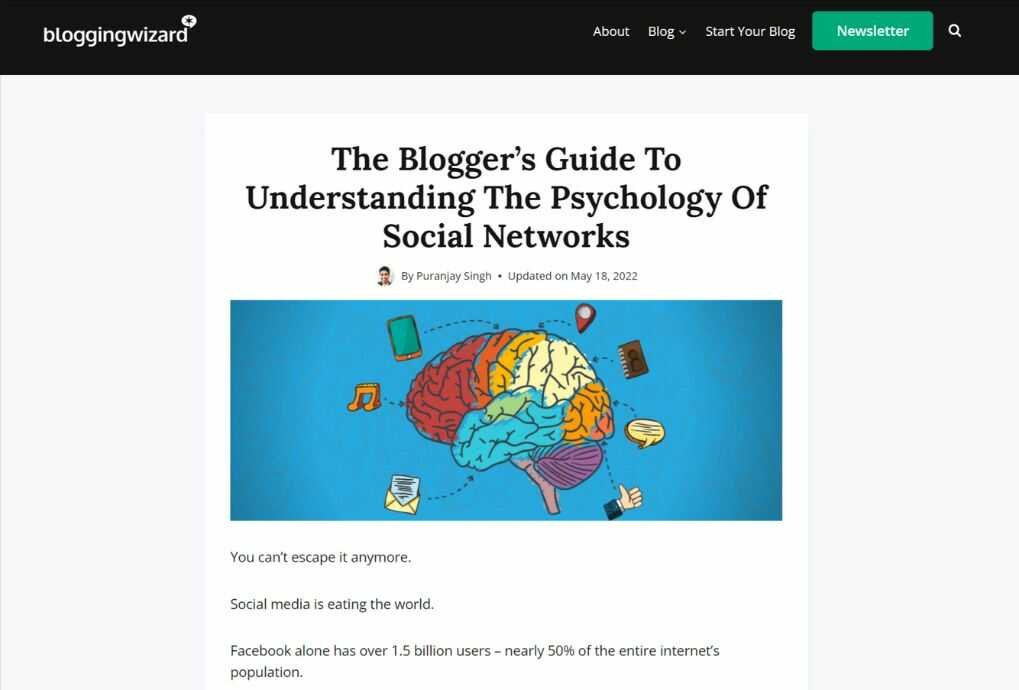
Image Source: Blogging Wizard
What they did was transform the data from the above article into an infographic and post it on their website.
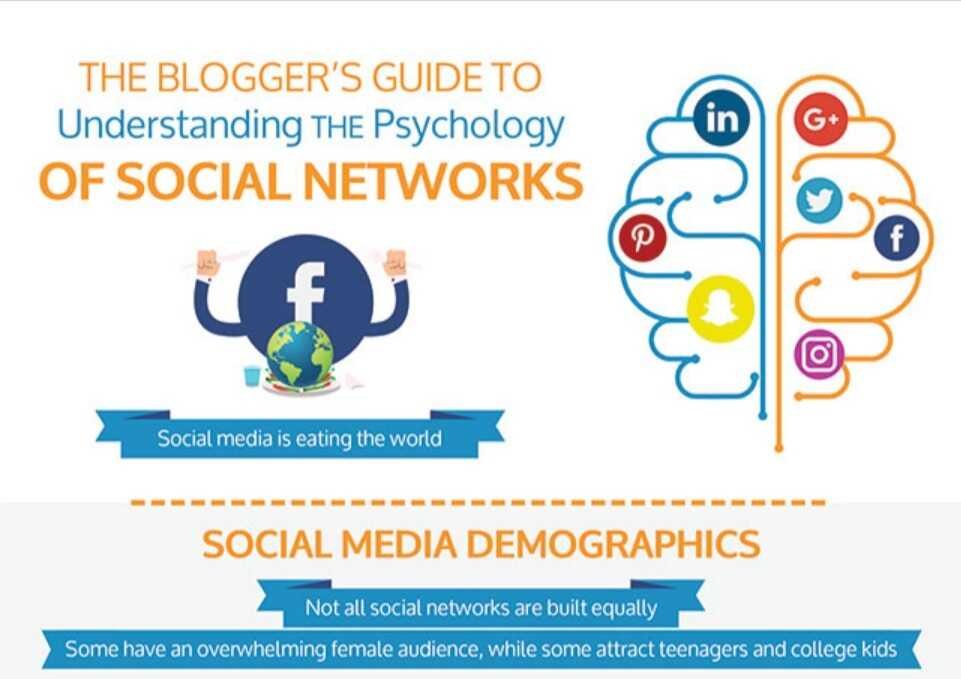
Image Source: Blogging Wizard
There is no reason you can’t do the same. Tools such as Visually and Piktochart allow you to make infographics without design expertise.
In the world of content marketing strategies, repurposing content is a valuable practice. Apart from allowing you to reach a wider audience, repurposing content optimizes your efforts. This is because repurposing content is faster in comparison to developing it entirely from the beginning.
Craft material from frequent buyer questions
Create content such as guides, video tutorials, or infographics based on common customer queries. To do so, establish communication channels, encourage social media queries, and utilize live-chat tools like Acquire.
Receiving numerous identical queries from your audience? Think about developing material that answers those queries. This will reduce the workload of your customer support crew. Plus, addressing these common queries on your site can improve your website’s SEO.
Also, using this approach as one of your content marketing strategies can generate topics that wouldn’t come up using keyword research, while ensuring they remain highly aligned with your company and audience.
In order to gather a wide range of buyers’ FAQs, make sure you offer various options for customers to reach out to you. You may be allowing your audience to get in touch through messaging to your inbox or by calling. But it’s also valuable to address their questions on social platforms.
In case you genuinely care about customer support in your company, consider including a real-time messaging functionality on your website. Software such as Acquire will help you:
- Create predefined replies
- View buyers’ past interactions during conversations
- Involve support technicians who can assist with a specific problem
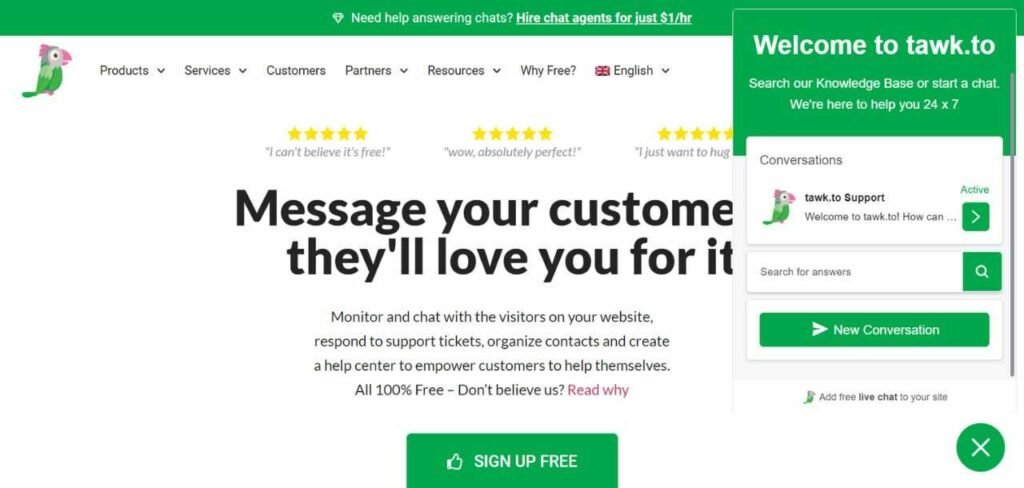
Modern customers expect a live chat option. So, incorporating a real-time messaging function aligns with contemporary content marketing strategies. And it will also help you meet the audience’s desire for prompt responses.
Now, regarding social platforms, you can miss out on buyers’ posts and responses if you don’t have a proper tool to manage them. That’s when using a social media monitoring platform comes to your rescue. It will allow you to ensure nothing is missed or neglected.
For example, HootSuite is among the top social media management tools available. And rightfully so, as it’s user-friendly and allows you to be certain that none of the buyers’ posts is left unaddressed.
Besides, you can also get your staff to jot down customers’ recurring queries. And try to create content that resolves them. This material can be in the form of an in-depth blog post, an infographic, or a video guide.
The better you personalize your material to suit your audiences’ needs, the higher will be their level of involvement.
Pay attention to search intent
Align your content with what users are looking for and their reason behind searching it. This will help you not only rank well but also boost engagement.
I’m sure you’ve attempted to modify a blog post so that your content is more suitable for a keyword with a promising search volume.
Keyword research remains crucial. Having said that, you must also focus on the search intent. If you don’t, you either won’t achieve a high position for your chosen keywords, or you won’t get people to stick around.
Clearly put, keyword research reveals what people are searching for. Precisely, the words or phrases they are manually putting in the search bar. On the other hand, intent research and search intent explain the reasons behind the inquiries.
In the absence of this information, you won’t be able to optimize your material to be effective every time.
Take informational intent, for instance. Many online search queries are conducted by individuals seeking details. These facts can be about anything and everything, such as climate conditions, SEO, insights into teaching kids, and more.
Individuals looking for information have a particular query in mind or a desire to delve deeper into a specific subject.
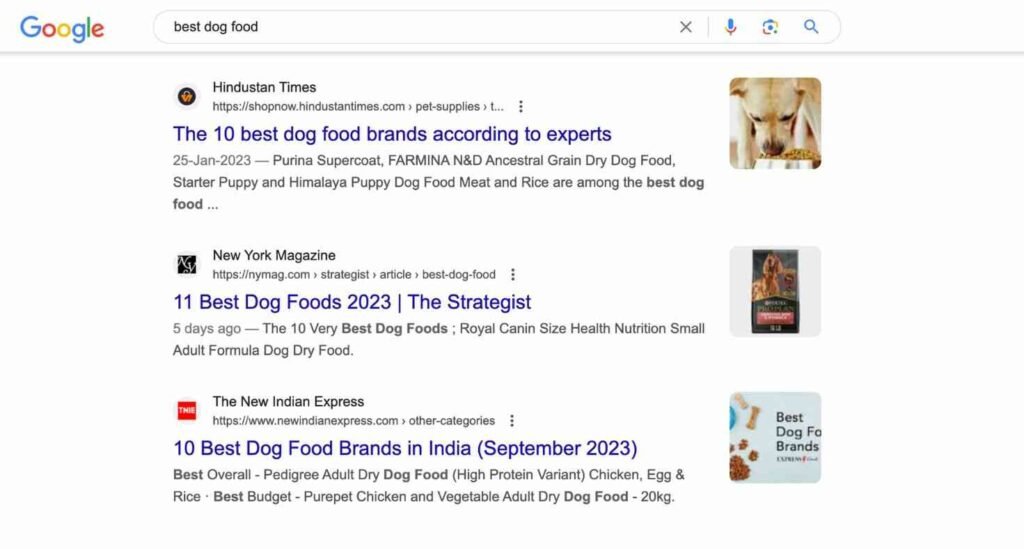
You must know that Google comprehends ‘what searchers want’ far more than just displaying webpages that provide details regarding a particular topic.
For example, Google understands that individuals searching for “best dog food” are probably seeking comparisons or reviews, rather than specific product pages.
Google knows that the majority of individuals entering ‘Apple’ in the search bar are interested in the technology company, rather than the fruit. It’s also aware that for specific queries, such as iPhone troubleshooting, including step-by-step guides is beneficial.
Understanding what searchers want as an element of your SEO plan involves you visiting Google and begin gaining insights. Enter a keyword in the search bar and ask yourself:
- Which type of content is in the top results right now?
- Do Google’s high-ranking results display websites of your competitors or businesses providing a related good or solution?
- How is the top-ranking content arranged?
- Do the displayed pages direct you to specific products, educational articles, or tutorials?
Answering these questions will provide direction in determining the kind of material you should produce.
Another question you should ask yourself is: In which group will this keyword belong? Knowing this will enable you to decide whether the keyword is compatible with your products or services or not.
In case the search is geared towards purchase or information that isn’t relevant to what you provide, look for alternative keywords that better match your offerings.
Utilize an editorial calendar
Use a content calendar to track your content marketing assets, their publishing schedule, and the people accountable for them.
Content marketing is a long-term game. It includes using several promotion techniques, creating exceptional material, and continual refinement. Managing all these tasks at once can be challenging.
For successful content planning, you need a carefully designed content calendar. This calendar allows marketing executives to keep an eye on content marketing initiatives. It also provides information on when the material will be posted and mentions the people accountable for it.
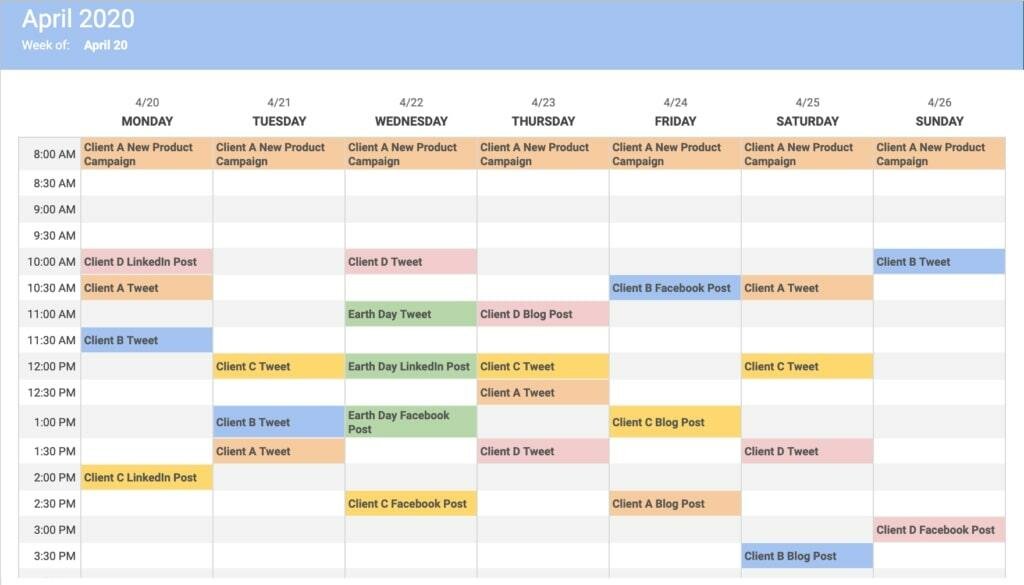
Image Source: Foundation Marketing
In order to begin, you can utilize this content calendar template to schedule your material for the coming days or even a year ahead. The template is made in a way that allows you to provide all the necessary information to your staff. Or content creators to post effective and focused material on schedule.
Use storytelling
Build a connection with your audience through powerful storytelling as part of your content marketing strategies. This helps humanize your brand, make a big impact, and increase sales.
An important component of effective content marketing strategies is establishing a relationship with your readers.
What can you do on your part to build that connection? The answer is storytelling.
Storytelling improves the sales element and streamlines the procedure. Considering that each company has a narrative to share, executing this shouldn’t pose a challenge.
For instance, National Geographic excels in including storytelling in the company’s social media plan. It’s renowned for sharing captivating visuals that hold audiences’ attention and make them seek further information.
Once the company grabs the focus of social media users with its compelling pictures, it then incorporates narration with it to deepen the engagement. The company’s blend of dynamic images and engaging narratives sets it apart and encourages repeat engagement.
Another thing that National Geographic does differently is that it recognizes the individuals who have taken the pictures rather than labeling them as its own.
When this is accompanied by storytelling, it elevates their activities beyond mere company advertising, making it appear less corporate and more human.

Marketing revolves around individuals. You must amaze people and convey the worth you provide, as they’re already encountering many ads that fail to resonate with them.
One amazing method by which you can add storytelling to your material is by being more relatable.
Here’s why, when a person becomes relatable to us, we tend to experience a stronger connection with their message. Personal narratives or opinions carry a deeper sentimental impact than stories from uninvolved or neutral perspectives.
Take, for instance, this particular blog post. It discusses innovation. And at the same time provides on how to improve your creative focus if you’re dealing with long-term sickness.
The content isn’t only supported by factual information. The author also uses her own personal story to back up her point of view. As she delves into her own experience, the readers feel compelled to agree. Although they didn’t encounter any challenges which the writer did.
This kind of personable writing makes a big impact. Your content could be more engaging, but only when you don’t hesitate to give it your own personal touch.
Build a relationship with your audience on a deeper, authentic level. Engage them with powerful storytelling. And you’ll see your sales soar as a result of using it in your content marketing strategies.
Guest posting
Leverage guest posting to show off your niche expertise while marketing your company at the same time.
When it comes to content development, many businesses overlook the promotion aspect. That’s where guest posting comes in.
It’s a powerful content marketing technique to demonstrate your niche expertise and spread the word about your company.
Guest posting refers to contributing original content to other well-known websites in your space. You start by identifying websites that may be open to accepting guest posts. Google is a good platform to use in this regard. Search for terms like:
[topic keyword phrase] + “write for us”
[topic keyword phrase] + “guest article”
[topic keyword phrase] + “become a contributor”
For example, if you run a home furniture business, you can enter:
furniture + “write for us”
or even something broader, like interior design + “write for us”
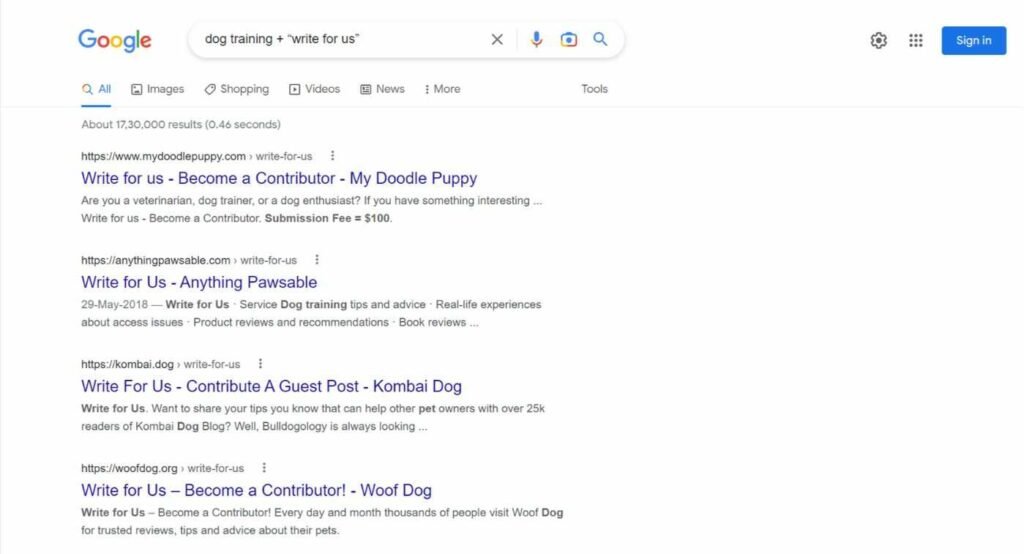
Another technique is to find popular bloggers in your industry and see where they are submitting guest posts. Again, search Google for terms like:
“guest post by [author name]” (e.g. guest post by John Doe)
Once you have found the websites you want to target, it’s time to contact them and pitch your article ideas. Make sure to keep your email short and personalized. Plus, include 3-5 topics in your pitch to give them options.
Also, most of the popular websites have a publicly available set of guest post guidelines they expect to be followed when someone writes for them. You should look for them and follow them to the letter. Otherwise, your pitch is likely to go into the trash pile.
Final thoughts on content marketing strategies
As you can see, there is no shortage of proven content marketing tips and methods to implement content marketing.
Having said that, every company is different and what works for you may not work for others. So it’s a good idea to experiment with a range of different content marketing strategies to what moves the needle for you.
Did we miss anything? Did you try these tips? Do you have any questions or comments? Share your thoughts below in the comments section.





We will definitely try this. Thanks for sharing your ideas!